 Search by Keyword
|
"GOLDEN SLUMBERS"
(John Lennon – Paul McCartney)
Paul McCartney is one of the most successful songwriters of the 20th Century. Rolling Stone Magazine, who credits Paul as #2 on their list of "100 Greatest Songwriters Of All Time," writes: "Sir Paul is pop's greatest melodist, with a bulging songbook that includes many of the most-performed and best-loved tunes of the past half-century."
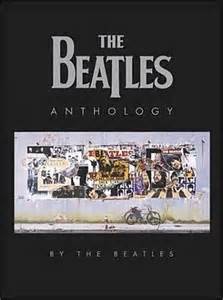 Many, however, would be surprised to learn about his lack of musical training. “I can't read music,” he admitted in the book “Beatles Anthology.” His musicianship and songwriting skills were mostly self-taught, mimicking the music he was exposed to as a youth, and incorporating those influences with his natural-born instinct. Many, however, would be surprised to learn about his lack of musical training. “I can't read music,” he admitted in the book “Beatles Anthology.” His musicianship and songwriting skills were mostly self-taught, mimicking the music he was exposed to as a youth, and incorporating those influences with his natural-born instinct.
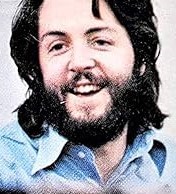 His lack of proper musical training didn't hinder his ability to become one of the most prolific hit songwriters in modern times. In fact, in the case of “Golden Slumbers,” his inability to read music brought forward a highly respected piece of music that stands out dramatically within the long “Abbey Road” medley. His lack of proper musical training didn't hinder his ability to become one of the most prolific hit songwriters in modern times. In fact, in the case of “Golden Slumbers,” his inability to read music brought forward a highly respected piece of music that stands out dramatically within the long “Abbey Road” medley.
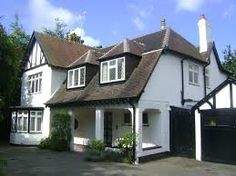
"Rembrandt" home purchased by Paul for his father Jim McCartney
Songwriting History
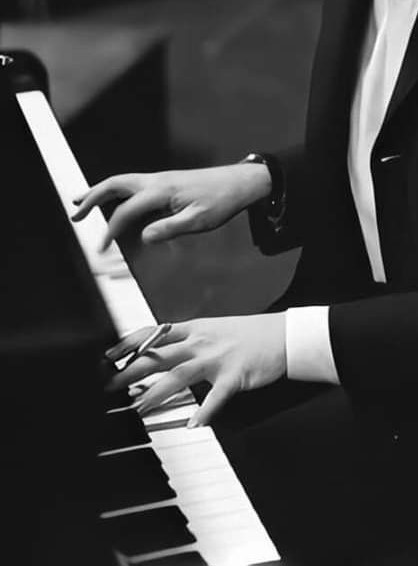 "I had a couple of bits and pieces that weren't finished," Paul stated in "Beatles Anthology" concerning his contributions to the "Abbey Road" medley. "They were songs that needed maybe a middle, or a second verse or an end. I was playing the piano in Liverpool in my dad's house, and my step-sister Ruth's piano book was up on the stand. I was flicking through it and I came to 'Golden Slumbers.' I can't read music and I couldn't remember the old tune, so I just started playing my own tune to it. I liked the words so I kept them, and it fitted with another bit of song I had." "I had a couple of bits and pieces that weren't finished," Paul stated in "Beatles Anthology" concerning his contributions to the "Abbey Road" medley. "They were songs that needed maybe a middle, or a second verse or an end. I was playing the piano in Liverpool in my dad's house, and my step-sister Ruth's piano book was up on the stand. I was flicking through it and I came to 'Golden Slumbers.' I can't read music and I couldn't remember the old tune, so I just started playing my own tune to it. I liked the words so I kept them, and it fitted with another bit of song I had."
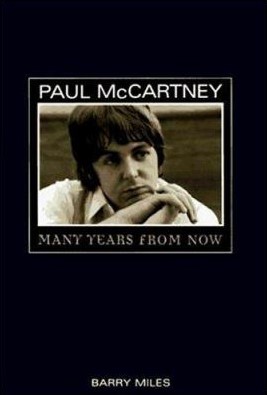 In his book “Many Years From Now,” Paul elaborates. “I liked the words so much. I thought it was very restful, a very beautiful lullaby, but I couldn't read the melody, not being able to read music. So I just took the words and wrote my own music. I didn't know at the time it was four hundred years old.” In his book “Many Years From Now,” Paul elaborates. “I liked the words so much. I thought it was very restful, a very beautiful lullaby, but I couldn't read the melody, not being able to read music. So I just took the words and wrote my own music. I didn't know at the time it was four hundred years old.”
It was sometime at the end of 1968 that Paul had visited “Rembrandt,” his father's home in Heswall, Cheshire, about 15 miles from Liverpool. The five-bedroom house was purchased by Paul for his father in July of 1964 once Beatles money started rolling in. Back in 1965, Paul had composed the bulk of the Beatles classic “We Can Work It Out” in this house as well, although this was composed on guitar instead of piano.
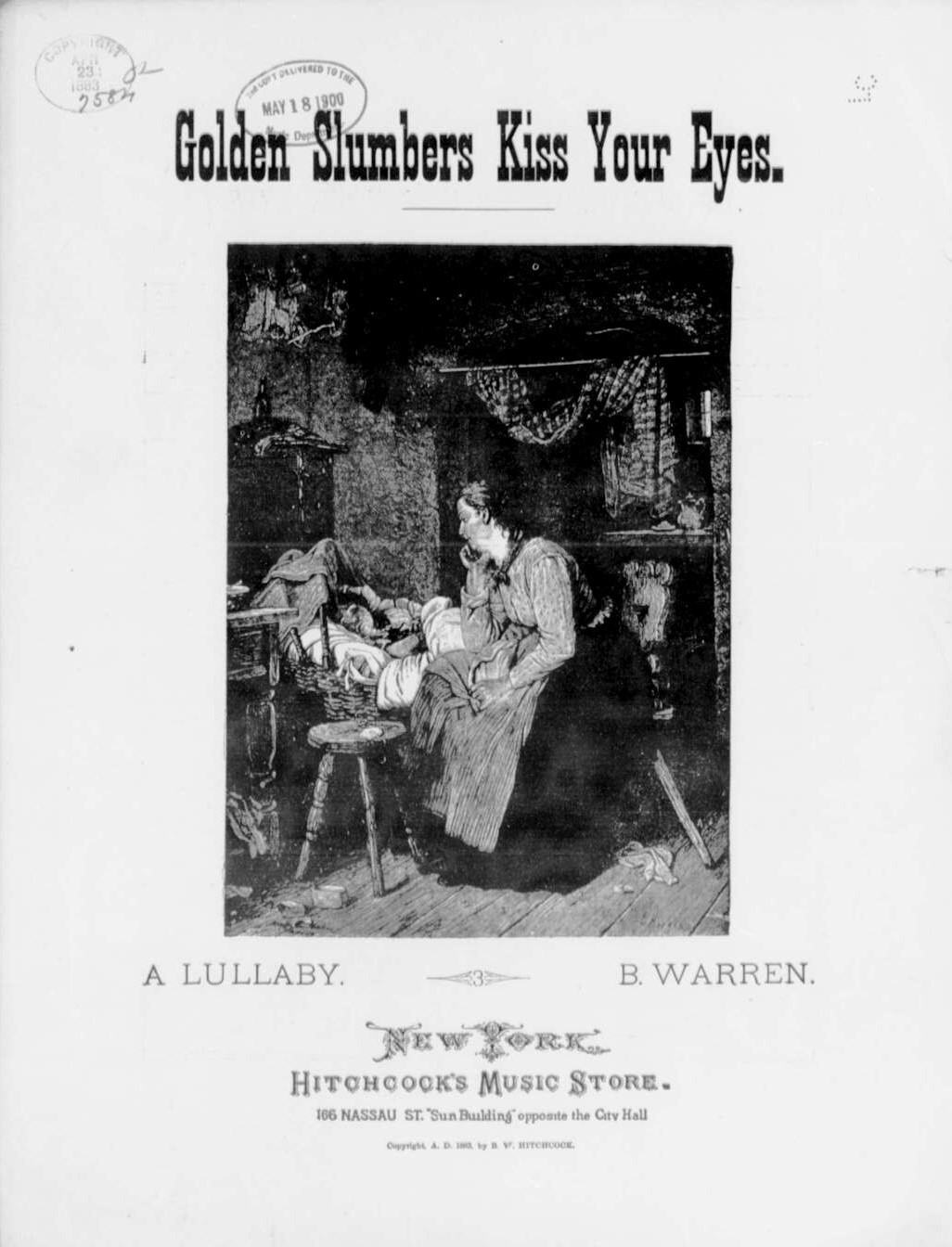 Paul's mother having passed away when he was fourteen years old, his father Jim McCartney had remarried a woman named Angela and, thereafter, Paul acquired a step-sister named Ruth. It was Ruth's piano book that Paul was leafing through on this winter day of 1968 when the pages landed on a poem entitled “Cradle Song.” This poem, which was first set to music in 1885 by W.J. Henderson under the title “Golden Slumbers Kiss Your Eyes,” was first written in 1599 by Thomas Dekker, a contemporary of William Shakespeare, Henry Chettle and William Haughton. This lullaby first appeared in the 1603 play "The Pleasant Comodie Of Patient Grissill,” also known as “The Pleasant Comedy Of Old Fortunatus.” By 1969, this composition was well out of copyright, which presented no plagiarism problem for Paul. He was somewhat familiar with the lullaby from his childhood, indicated by the above statement that he “couldn't remember the old tune.” During a runthrough of the song on January 9th, 1969 during the Twickenham Film Studios rehearsals for what became the "Let It Be" film and album, Paul explains to Ringo, "It's an old English love song...I don't know how the rest of it goes but just at the end of it, it goes (singing slowly) 'and I will sing a lullaby.'" Paul's mother having passed away when he was fourteen years old, his father Jim McCartney had remarried a woman named Angela and, thereafter, Paul acquired a step-sister named Ruth. It was Ruth's piano book that Paul was leafing through on this winter day of 1968 when the pages landed on a poem entitled “Cradle Song.” This poem, which was first set to music in 1885 by W.J. Henderson under the title “Golden Slumbers Kiss Your Eyes,” was first written in 1599 by Thomas Dekker, a contemporary of William Shakespeare, Henry Chettle and William Haughton. This lullaby first appeared in the 1603 play "The Pleasant Comodie Of Patient Grissill,” also known as “The Pleasant Comedy Of Old Fortunatus.” By 1969, this composition was well out of copyright, which presented no plagiarism problem for Paul. He was somewhat familiar with the lullaby from his childhood, indicated by the above statement that he “couldn't remember the old tune.” During a runthrough of the song on January 9th, 1969 during the Twickenham Film Studios rehearsals for what became the "Let It Be" film and album, Paul explains to Ringo, "It's an old English love song...I don't know how the rest of it goes but just at the end of it, it goes (singing slowly) 'and I will sing a lullaby.'"
The original lyrics of this Thomas Dekker lullaby are as follows:
“Golden slumbers kiss your eyes,
Smiles awake you when you rise,
Sleep, pretty wantons, do not cry,
And I will sing a lullaby,
Rock them, rock them, lullaby,
Care is heavy, therefore sleep you,
You are care, and care must keep you,
And I will sing a lullaby,
Rock them, rock them, lullaby.”
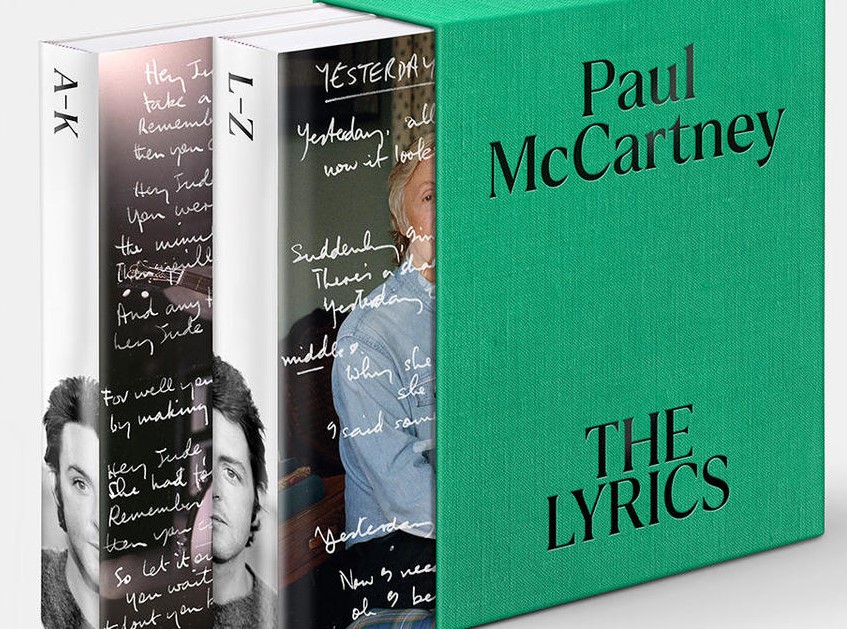 "It fitted with another bit of a song I had," Paul explained. Regarding the lyrics about “a way to get back home,” Paul states in his 2021 book "The Lyrics," "It's very possible that I'd been feeling down in London. I was back in the solace of family and Liverpool, and what with The Beatles troubles down south, I was likely thinking, 'Wouldn't it be nice to get home and have that comfortable feeling again?' So, there may have been some of that in the background. I wouldn't rule it out. When I wrote the song, I hadn't been back home to Liverpool for a long time. But now I was at my dad's house, which wasn't quite home because it was a house I'd bought him when I got some money...But it was still Liverpool, and it was 'homeward.' So I added, 'Once there was a way to get back homeward / Once there was a way to get back home.' The song turned out to be quite soulful, and I think that's what attracted me to those lyrics in the first place - that notion of consoling a baby or reading kids a bedtime story." "It fitted with another bit of a song I had," Paul explained. Regarding the lyrics about “a way to get back home,” Paul states in his 2021 book "The Lyrics," "It's very possible that I'd been feeling down in London. I was back in the solace of family and Liverpool, and what with The Beatles troubles down south, I was likely thinking, 'Wouldn't it be nice to get home and have that comfortable feeling again?' So, there may have been some of that in the background. I wouldn't rule it out. When I wrote the song, I hadn't been back home to Liverpool for a long time. But now I was at my dad's house, which wasn't quite home because it was a house I'd bought him when I got some money...But it was still Liverpool, and it was 'homeward.' So I added, 'Once there was a way to get back homeward / Once there was a way to get back home.' The song turned out to be quite soulful, and I think that's what attracted me to those lyrics in the first place - that notion of consoling a baby or reading kids a bedtime story."
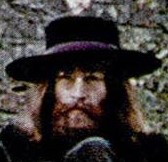 Although the song is credited to “Lennon / McCartney” as usual, John never claimed any contribution to its writing. He did, however, mistakenly believe that Paul borrowed the lyrics “from a poem that he found in a book, some eighteenth-century book where he just changed words here and there,” Lennon stated in a 1969 interview. Close, but no cigar! Although the song is credited to “Lennon / McCartney” as usual, John never claimed any contribution to its writing. He did, however, mistakenly believe that Paul borrowed the lyrics “from a poem that he found in a book, some eighteenth-century book where he just changed words here and there,” Lennon stated in a 1969 interview. Close, but no cigar!
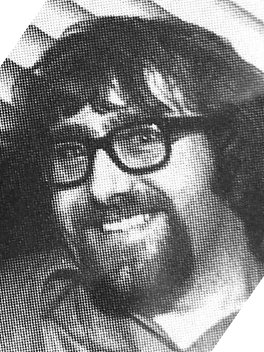 During the above mentioned January 9th, 1969 Twickenham Studios rehearsal for the "Let It Be" project, as seen in the 2021 Peter Jackson "Get Back" series, Paul rehearses "Golden Slumbers" on piano while dictating lyric ideas to assistant Mal Evans. "It really should be like a fairy tale," Paul states, continuing: "Once upon a time there was a princess!" He then demonstrates while playing the piano, "Once upon a time / there lived a king / sleep pretty darling / do not cry," to which Mal Evans adds, "and the king will sing a lullaby!" During the above mentioned January 9th, 1969 Twickenham Studios rehearsal for the "Let It Be" project, as seen in the 2021 Peter Jackson "Get Back" series, Paul rehearses "Golden Slumbers" on piano while dictating lyric ideas to assistant Mal Evans. "It really should be like a fairy tale," Paul states, continuing: "Once upon a time there was a princess!" He then demonstrates while playing the piano, "Once upon a time / there lived a king / sleep pretty darling / do not cry," to which Mal Evans adds, "and the king will sing a lullaby!"
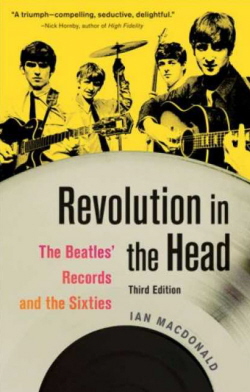 After this idea was discarded, all of the official finished lyrics were solidified on this day, which established that the writing of "Golden Slumbers" was done between December 1968 and early January 1969. Interestingly, Paul later thought to combine "Golden Slumbers" with a reprise of his song “You Never Give Me Your Money” which he wrote a few months later when the "Abbey Road" medley was being assembled in the studio later that year. This was easily done because of them both being written in the same key and both "picking up the mood of sad farewell," as explained by Ian MacDonald in his book "Revolution In The Head." After this idea was discarded, all of the official finished lyrics were solidified on this day, which established that the writing of "Golden Slumbers" was done between December 1968 and early January 1969. Interestingly, Paul later thought to combine "Golden Slumbers" with a reprise of his song “You Never Give Me Your Money” which he wrote a few months later when the "Abbey Road" medley was being assembled in the studio later that year. This was easily done because of them both being written in the same key and both "picking up the mood of sad farewell," as explained by Ian MacDonald in his book "Revolution In The Head."
Recording History
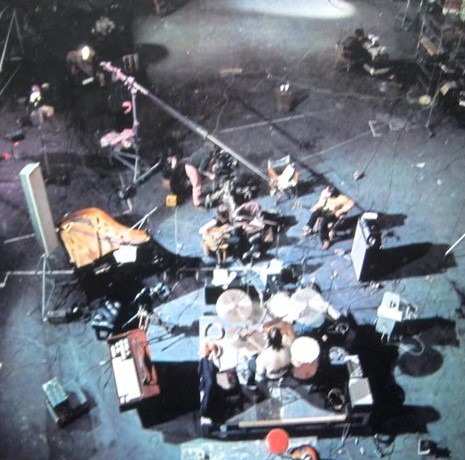 As mentioned above, Paul brought "Golden Slumbers" to The Beatles during the filmed rehearsals in Twickenham Film Studios for what became the "Let It Be" project. He first performed a piano rendition of the song, along with its companion piece "Carry That Weight," on January 7th, 1969. He repeated the verse and refrain of the song three times during this rough rehearsal, the first lyric line being sung as "Once there was a way to travel homeward" each time. As mentioned above, Paul brought "Golden Slumbers" to The Beatles during the filmed rehearsals in Twickenham Film Studios for what became the "Let It Be" project. He first performed a piano rendition of the song, along with its companion piece "Carry That Weight," on January 7th, 1969. He repeated the verse and refrain of the song three times during this rough rehearsal, the first lyric line being sung as "Once there was a way to travel homeward" each time.
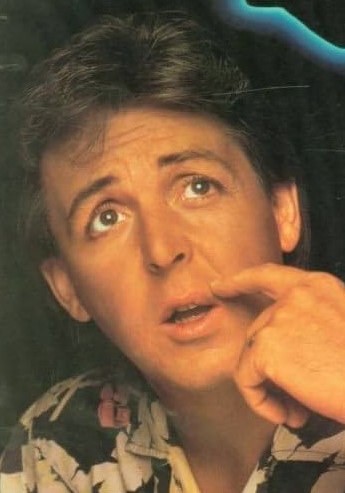 In his book “Many Years From Now,” Paul explains his intentions for his vocal performance on this song. “I remember trying to get a very strong vocal on it, because it was such a gentle theme, so I worked on the strength of the vocal on it, and ended up quite pleased with it.” This first premier of the song on January 7th, 1969, shows Paul already experimenting with this forceful delivery. In his book “Many Years From Now,” Paul explains his intentions for his vocal performance on this song. “I remember trying to get a very strong vocal on it, because it was such a gentle theme, so I worked on the strength of the vocal on it, and ended up quite pleased with it.” This first premier of the song on January 7th, 1969, shows Paul already experimenting with this forceful delivery.
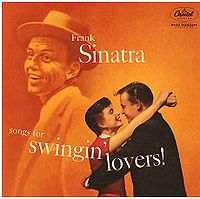 Paul next ran through the song on piano at Twickenham Film Studios during their January 9th, 1969 rehearsal, as detailed above. The lyric “once there was a way to get back homeward” now being in place, this impromptu rehearsal was done while conversing with Ringo and dictating lyric ideas to assistant Mal Evans. In reference to how the song sounded at this point, Paul stated, “Should be ready for a 'Songs For Swinging Lovers' album soon," in reference to Frank Sinatra's similarly titled album from 1956. Paul next ran through the song on piano at Twickenham Film Studios during their January 9th, 1969 rehearsal, as detailed above. The lyric “once there was a way to get back homeward” now being in place, this impromptu rehearsal was done while conversing with Ringo and dictating lyric ideas to assistant Mal Evans. In reference to how the song sounded at this point, Paul stated, “Should be ready for a 'Songs For Swinging Lovers' album soon," in reference to Frank Sinatra's similarly titled album from 1956.
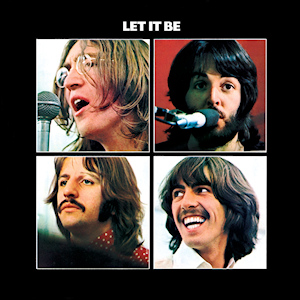 Apparently, Paul didn't feel comfortable enough yet to include the song among those in consideration for the “Let It Be” project, so this second run-through was the last time he performed it during the January rehearsals. It was shelved for the time being, along with other underdeveloped ideas like “She Came In Through The Bathroom Window,” only to be resurrected at a later time. Apparently, Paul didn't feel comfortable enough yet to include the song among those in consideration for the “Let It Be” project, so this second run-through was the last time he performed it during the January rehearsals. It was shelved for the time being, along with other underdeveloped ideas like “She Came In Through The Bathroom Window,” only to be resurrected at a later time.
 It wasn't until the decision was made to make one final Beatles album that Paul dusted off “Golden Slumbers” and brought it to EMI Studio Two to record. It was the second session after that decision was made, on July 2nd, 1969, that Paul, George and Ringo laid down the rhythm track for the song, John being hospitalized at the time because of a road accident he was in during a vacation in Scotland. It wasn't until the decision was made to make one final Beatles album that Paul dusted off “Golden Slumbers” and brought it to EMI Studio Two to record. It was the second session after that decision was made, on July 2nd, 1969, that Paul, George and Ringo laid down the rhythm track for the song, John being hospitalized at the time because of a road accident he was in during a vacation in Scotland.
 Paul entered the studio by himself earlier in the day and recorded his short song “Her Majesty” for consideration of it being used in the “Abbey Road” medley. Engineer Geoff Emerick, in his book “Here, There And Everywhere,” recounts the events of the rest of the day, starting at approximately 5 pm. “Later that same day, after Ringo and George Harrison arrived, the three Beatles recorded the backing track for 'Golden Slumbers / Carry That Weight.' The two songs were joined together even at that early stage because Paul had already come up with the idea of linking up several short snippets into a medley of sorts. No one was sure how John would react, but we got on with the work anyway. There seemed to be an assumption that he would go along with it, and that this time around, in contrast to the 'White Album,' he wouldn't be calling all the shots." In actuality, John was indeed on board with "a kind of song montage that we might do as one piece on one side," as he stated in a May 1969 interview. Paul entered the studio by himself earlier in the day and recorded his short song “Her Majesty” for consideration of it being used in the “Abbey Road” medley. Engineer Geoff Emerick, in his book “Here, There And Everywhere,” recounts the events of the rest of the day, starting at approximately 5 pm. “Later that same day, after Ringo and George Harrison arrived, the three Beatles recorded the backing track for 'Golden Slumbers / Carry That Weight.' The two songs were joined together even at that early stage because Paul had already come up with the idea of linking up several short snippets into a medley of sorts. No one was sure how John would react, but we got on with the work anyway. There seemed to be an assumption that he would go along with it, and that this time around, in contrast to the 'White Album,' he wouldn't be calling all the shots." In actuality, John was indeed on board with "a kind of song montage that we might do as one piece on one side," as he stated in a May 1969 interview.
 Fifteen takes of the rhythm track were recorded on this day, the instrumentation being Ringo on drums (track one), George on Fender Bass VI (track two) and Paul on piano (track three) and guide vocal (track eight). Interestingly, even though “Golden Slumbers” and “Carry That Weight” were stipulated as two individual songs on the finished album, the documentation at this point indicated that the title of this entire rhythm track was “Golden Slumbers.” Takes one through three, all of which were incomplete takes, were included on various 50th Anniversary releases of "Abbey Road." Fifteen takes of the rhythm track were recorded on this day, the instrumentation being Ringo on drums (track one), George on Fender Bass VI (track two) and Paul on piano (track three) and guide vocal (track eight). Interestingly, even though “Golden Slumbers” and “Carry That Weight” were stipulated as two individual songs on the finished album, the documentation at this point indicated that the title of this entire rhythm track was “Golden Slumbers.” Takes one through three, all of which were incomplete takes, were included on various 50th Anniversary releases of "Abbey Road."
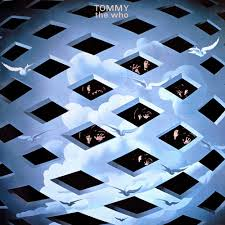 After engineer Phil McDonald called out "'Golden Slumbers,' take one," we hear Paul continuing a conversation with George about an unidentified recent release, possibly The Who's "Tommy" that The Beatles had referenced at other sessions at the time. "Yeah, there's a couple on the album a bit like that," Paul states, thereby starting his piano intro to "Golden Slumbers." This, however, reminded him of his 1967 composition "The Fool On The Hill," which prompts him to change keys on his piano introduction in order to demonstrate "Day after day..." vocally before chuckling and concluding what was designated as 'take one.' After the engineer names the next take by saying "two" on the talkback microphone, they get through the entire "Golden Slumbers" song before falling apart midway through the first "Carry That Weight" refrain. After engineer Phil McDonald called out "'Golden Slumbers,' take one," we hear Paul continuing a conversation with George about an unidentified recent release, possibly The Who's "Tommy" that The Beatles had referenced at other sessions at the time. "Yeah, there's a couple on the album a bit like that," Paul states, thereby starting his piano intro to "Golden Slumbers." This, however, reminded him of his 1967 composition "The Fool On The Hill," which prompts him to change keys on his piano introduction in order to demonstrate "Day after day..." vocally before chuckling and concluding what was designated as 'take one.' After the engineer names the next take by saying "two" on the talkback microphone, they get through the entire "Golden Slumbers" song before falling apart midway through the first "Carry That Weight" refrain.
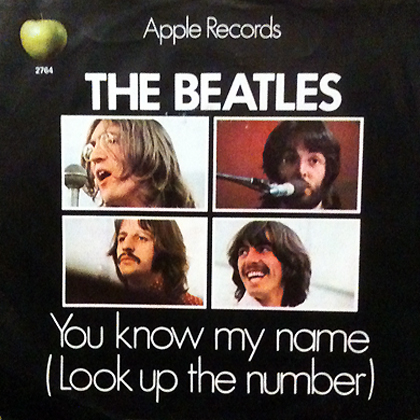 After "three" is called out by Phil McDonald, Paul begins his piano intro a little too heavy and then, realizing his mistake, stops and quietly says to himself, "lighter." He then begins 'take three' in good form but then calls it quits just after he belts out the word "golden..." for the first time. After he collects himself by saying "ok," the engineer identifies the next take by saying "four." McCartney thought he was calling his name but, when Phil McDonald specifies that he was saying "four" and not "Paul," he replies, "Ah, the number we're on. OK. You know my number," this being a sly reference to a yet-to-be-released Beatles track entitled "You Know My Name (Look Up The Number)." After "take 15," The Beatles were convinced that they had nailed down a satisfactory rhythm track, the session then concluding at 9:30 pm. After "three" is called out by Phil McDonald, Paul begins his piano intro a little too heavy and then, realizing his mistake, stops and quietly says to himself, "lighter." He then begins 'take three' in good form but then calls it quits just after he belts out the word "golden..." for the first time. After he collects himself by saying "ok," the engineer identifies the next take by saying "four." McCartney thought he was calling his name but, when Phil McDonald specifies that he was saying "four" and not "Paul," he replies, "Ah, the number we're on. OK. You know my number," this being a sly reference to a yet-to-be-released Beatles track entitled "You Know My Name (Look Up The Number)." After "take 15," The Beatles were convinced that they had nailed down a satisfactory rhythm track, the session then concluding at 9:30 pm.
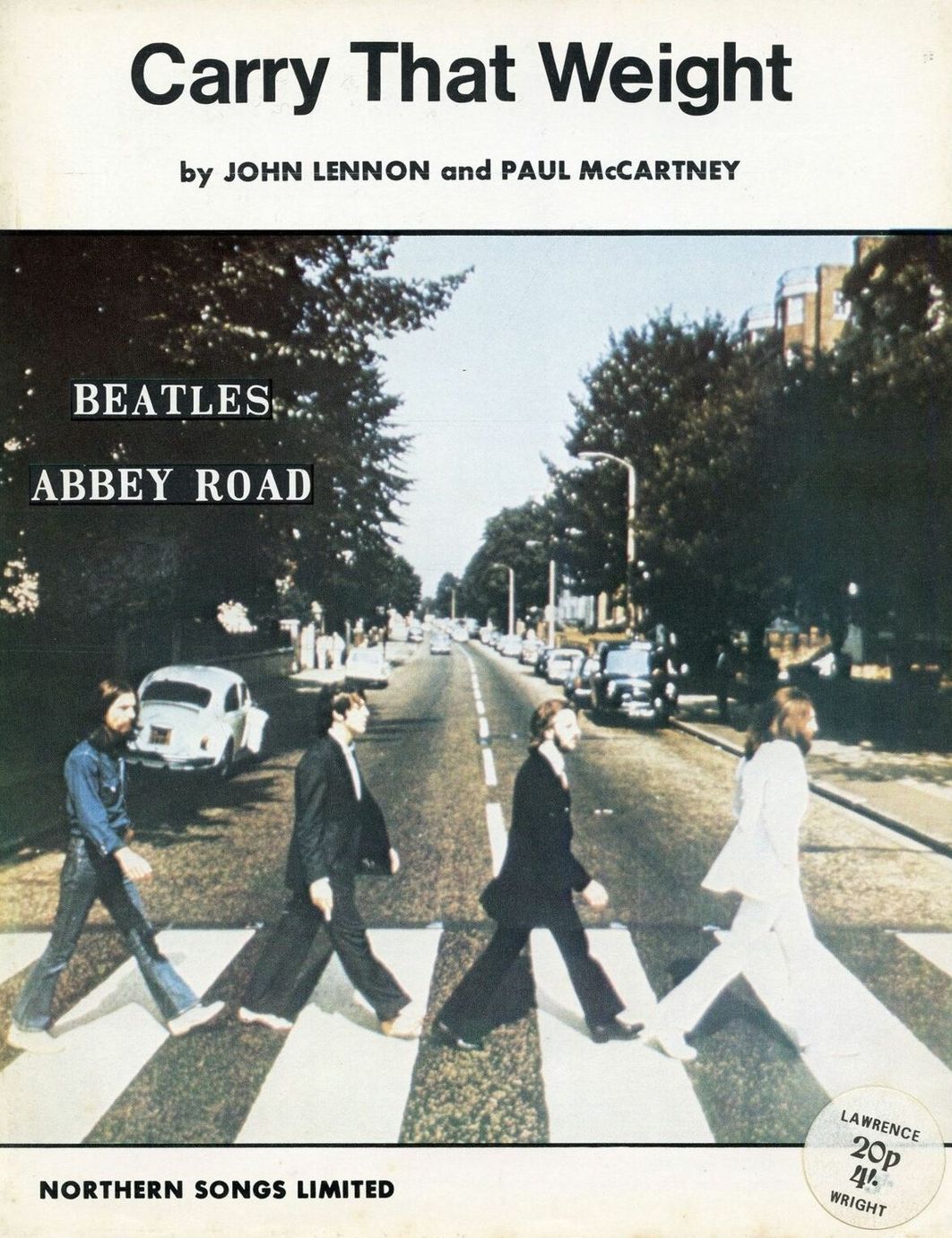 The following day, July 3rd, 1969, was devoted entirely to additional work on “Golden Slumbers.” As the session began at 3 pm in EMI Studio Two, the first order of business was editing together "take 13" and "take 15" to create a satisfactory rhythm track for overdubbing purposes. Once this was edited together, the result still being called "take 13," the three Beatles took to adding various elements (John still being hospitalized) to the composite "Golden Slumbers / Carry That Weight" track. The first section on the song saw Paul adding vocals onto track four, while various other elements were added to the later section. With this complete, it was seen that all eight tracks of the tape were full. Therefore, a reduction mix was needed to open up more tracks for further overdubbing. Two attempts at the reduction mix were made, documented as "take 16" and "take 17," "take 17" being deemed best. The session was complete by 8:30 pm. The following day, July 3rd, 1969, was devoted entirely to additional work on “Golden Slumbers.” As the session began at 3 pm in EMI Studio Two, the first order of business was editing together "take 13" and "take 15" to create a satisfactory rhythm track for overdubbing purposes. Once this was edited together, the result still being called "take 13," the three Beatles took to adding various elements (John still being hospitalized) to the composite "Golden Slumbers / Carry That Weight" track. The first section on the song saw Paul adding vocals onto track four, while various other elements were added to the later section. With this complete, it was seen that all eight tracks of the tape were full. Therefore, a reduction mix was needed to open up more tracks for further overdubbing. Two attempts at the reduction mix were made, documented as "take 16" and "take 17," "take 17" being deemed best. The session was complete by 8:30 pm.
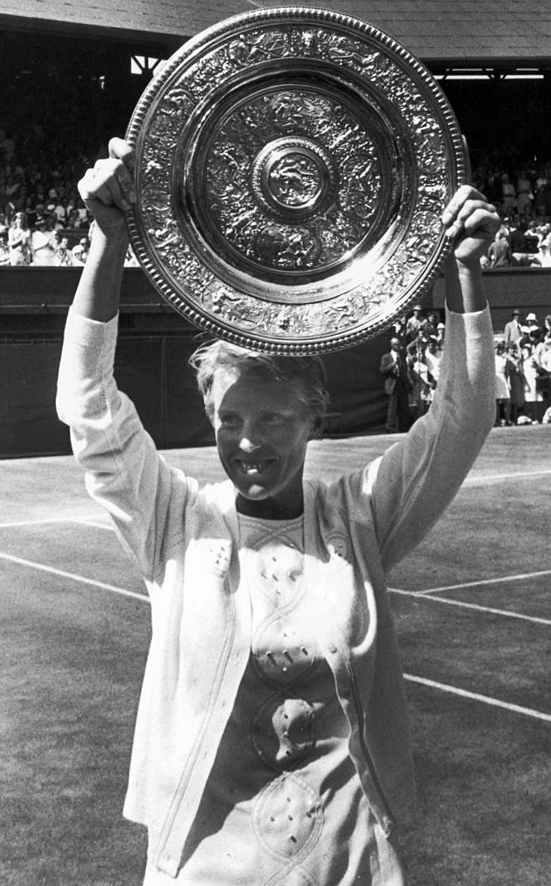 There was one unidentified overdub that was recorded onto the newly reduced recording of “Golden Slumbers” on the following day, July 4th, 1969, although the identity of this overdub is not documented anywhere. This session ran from 2:45 to 5:30 pm in EMI Studio Two, but there was something more pressing on everyone's mind on this day. The Wimbledon Ladies tennis match between Britain's Ann Jones and America's Billie-Jean King was being broadcast on BBC Radio 2. Technical engineer Dave Harries explains in the book “The Beatles Recording Sessions” the events of this session: “We were sitting there listening to the final before The Beatles came in. We had it coming through the mixing console. Then they came in and we thought, 'Oh blimey, that's it,' especially when they pulled faces and went 'Uggghhh.' But they said we could carry on listening for a while and then, a few minutes later, one of them asked how Ann Jones was getting on, so we put it through on the studio speakers so that they could listen too!” As it turned out a good portion of the tennis match was committed to tape in the studio on this day, Ann Jones winning the match! On the session tape, former Wimbledon champion Fred Perry is heard describing the match as a "nervous Nelly game!" There was one unidentified overdub that was recorded onto the newly reduced recording of “Golden Slumbers” on the following day, July 4th, 1969, although the identity of this overdub is not documented anywhere. This session ran from 2:45 to 5:30 pm in EMI Studio Two, but there was something more pressing on everyone's mind on this day. The Wimbledon Ladies tennis match between Britain's Ann Jones and America's Billie-Jean King was being broadcast on BBC Radio 2. Technical engineer Dave Harries explains in the book “The Beatles Recording Sessions” the events of this session: “We were sitting there listening to the final before The Beatles came in. We had it coming through the mixing console. Then they came in and we thought, 'Oh blimey, that's it,' especially when they pulled faces and went 'Uggghhh.' But they said we could carry on listening for a while and then, a few minutes later, one of them asked how Ann Jones was getting on, so we put it through on the studio speakers so that they could listen too!” As it turned out a good portion of the tennis match was committed to tape in the studio on this day, Ann Jones winning the match! On the session tape, former Wimbledon champion Fred Perry is heard describing the match as a "nervous Nelly game!"
 “Golden Slumbers” was then shelved for about a month so that work on many other “Abbey Road” tracks could be done, John being released from the hospital during this time. Work did resume on the composite track, which was now documented as “Golden Slumbers / Carry That Weight,” on July 30th, 1969 in EMI Studio Three. The Beatles entered the studio at 3:30 pm for overdubs on various “Abbey Road” tracks, Paul adding yet another vocal track to "Golden Slumbers" in his attempt to nail down a perfect performance. “Golden Slumbers” was then shelved for about a month so that work on many other “Abbey Road” tracks could be done, John being released from the hospital during this time. Work did resume on the composite track, which was now documented as “Golden Slumbers / Carry That Weight,” on July 30th, 1969 in EMI Studio Three. The Beatles entered the studio at 3:30 pm for overdubs on various “Abbey Road” tracks, Paul adding yet another vocal track to "Golden Slumbers" in his attempt to nail down a perfect performance.
 With this accomplished, they moved into the control room of EMI Studio Two at 10:30 pm to put together a mock-up of what the long side-two medley would sound like, to see if all the song fragments could be edited together seamlessly. The first order of business, however, was to treat all of these recordings to a stereo mix, the “Golden Slumbers” segment being mixed by George Martin and engineers Geoff Emerick, Phil McDonald and John Kurlander. All of these preliminary stereo mixes were then edited together and, with some discussion about tweaking between some of the other tracks, the medley was seen to be workable. As heard on various 50th Anniversary releases of "Abbey Road," this mix reveals that Paul's lead vocal was yet to be improved upon, as well as not yet including the string arrangement that we're used to hearing on the finished album. This session then ended at 2:30 am the following morning. With this accomplished, they moved into the control room of EMI Studio Two at 10:30 pm to put together a mock-up of what the long side-two medley would sound like, to see if all the song fragments could be edited together seamlessly. The first order of business, however, was to treat all of these recordings to a stereo mix, the “Golden Slumbers” segment being mixed by George Martin and engineers Geoff Emerick, Phil McDonald and John Kurlander. All of these preliminary stereo mixes were then edited together and, with some discussion about tweaking between some of the other tracks, the medley was seen to be workable. As heard on various 50th Anniversary releases of "Abbey Road," this mix reveals that Paul's lead vocal was yet to be improved upon, as well as not yet including the string arrangement that we're used to hearing on the finished album. This session then ended at 2:30 am the following morning.
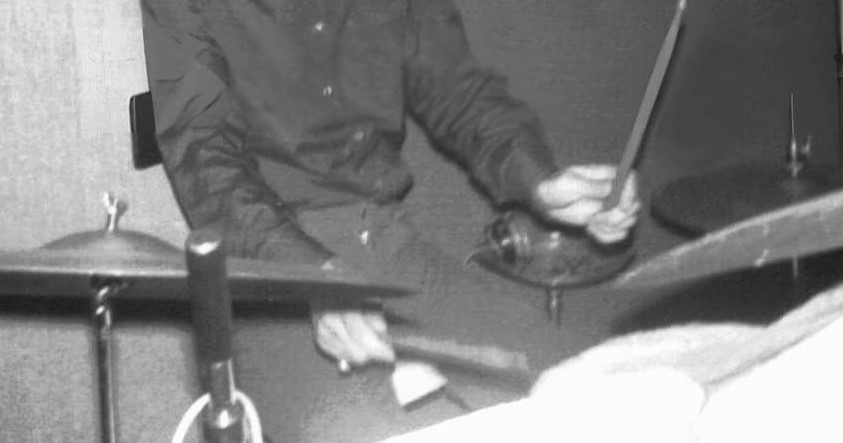 The next day, July 31st, 1969, saw The Beatles entering EMI Studio Two at 2:30 pm for yet another overdub session. After working on “You Never Give Me Your Money,” attention turned back to “Golden Slumbers” with another vocal attempt from Paul, noted on the tape box by engineer Chris Blair as "Best vocal - Track 6," and extra drum hits by Ringo (track seven). This ended the contributions that The Beatles made to the song, an orchestra still being needed on the track which would be recorded at a later date. This session ended at 1:15 am the next morning. The next day, July 31st, 1969, saw The Beatles entering EMI Studio Two at 2:30 pm for yet another overdub session. After working on “You Never Give Me Your Money,” attention turned back to “Golden Slumbers” with another vocal attempt from Paul, noted on the tape box by engineer Chris Blair as "Best vocal - Track 6," and extra drum hits by Ringo (track seven). This ended the contributions that The Beatles made to the song, an orchestra still being needed on the track which would be recorded at a later date. This session ended at 1:15 am the next morning.
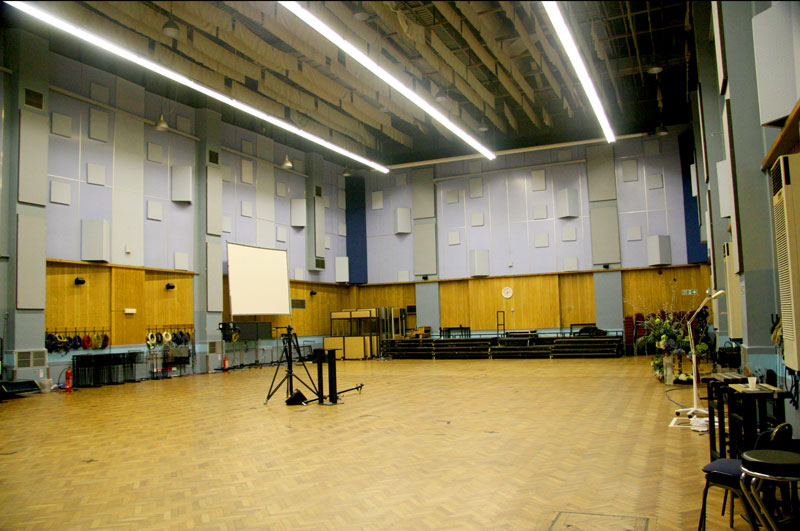 The orchestral overdub occurred on August 15th, 1969 in EMI Studio One, the session beginning at 2:30 pm. There was a snag regarding this session, however, as Geoff Emerick explains: “EMI had still not installed an eight-track tape recorder or large-scale console into the Studio One control room, so we were forced to set up a complicated system of audio tie-lines and closed-circuit television that allowed the musicians to be seated in the larger Studio One while we recorded them in the control room of Studio Two.” The orchestral overdub occurred on August 15th, 1969 in EMI Studio One, the session beginning at 2:30 pm. There was a snag regarding this session, however, as Geoff Emerick explains: “EMI had still not installed an eight-track tape recorder or large-scale console into the Studio One control room, so we were forced to set up a complicated system of audio tie-lines and closed-circuit television that allowed the musicians to be seated in the larger Studio One while we recorded them in the control room of Studio Two.”
 This session focused on segments of the long medley that were primarily Paul's compositions, namely “Golden Slumbers / Carry That Weight” and “The End.” Geoff Emerick continues: “Following the pattern that had been established for much of the album, the only Beatle at (this) session was Paul...(Engineer) Phil McDonald, however, was there with me – working in two studios at once really complicated things, and we needed the extra pair of hands. George Martin did the conducting while (Paul) essentially produced his own session. Thankfully, there were no major technical mishaps and everything worked smoothly.” Engineer Alan Brown remembers, as interviewed for the book “The Beatles Recording Sessions”: “It was a mammoth session. We had a large number of lines linking the studios and we were all walking around the building with walkie-talkies trying to communicate with each other...It cost a lot of money: all the musicians have to be paid, fed and watered; I screw every pound note out of it whenever I play the record!” This session focused on segments of the long medley that were primarily Paul's compositions, namely “Golden Slumbers / Carry That Weight” and “The End.” Geoff Emerick continues: “Following the pattern that had been established for much of the album, the only Beatle at (this) session was Paul...(Engineer) Phil McDonald, however, was there with me – working in two studios at once really complicated things, and we needed the extra pair of hands. George Martin did the conducting while (Paul) essentially produced his own session. Thankfully, there were no major technical mishaps and everything worked smoothly.” Engineer Alan Brown remembers, as interviewed for the book “The Beatles Recording Sessions”: “It was a mammoth session. We had a large number of lines linking the studios and we were all walking around the building with walkie-talkies trying to communicate with each other...It cost a lot of money: all the musicians have to be paid, fed and watered; I screw every pound note out of it whenever I play the record!”
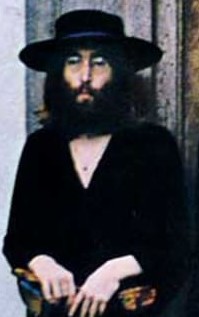 As mentioned above concerning John's opinions of the proceedings, he voiced them in a 1969 interview. Referring to Paul and his intentions for “Golden Slumbers,” he stated: “He laid the strings on after we had finished most of the basic tracks. I personally can't be bothered with strings and things. I like to do it with the group, or electronics, you know. I can't be bothered with the hassles of the musicians and all that bit, you know. It's such a drag trying to get them together, but Paul digs that. So, that's his scene, and it was up to him where he went with the violins, really, and what he did with them. I think he just wanted a straight kind of backing, you know, nothing freaky.” As mentioned above concerning John's opinions of the proceedings, he voiced them in a 1969 interview. Referring to Paul and his intentions for “Golden Slumbers,” he stated: “He laid the strings on after we had finished most of the basic tracks. I personally can't be bothered with strings and things. I like to do it with the group, or electronics, you know. I can't be bothered with the hassles of the musicians and all that bit, you know. It's such a drag trying to get them together, but Paul digs that. So, that's his scene, and it was up to him where he went with the violins, really, and what he did with them. I think he just wanted a straight kind of backing, you know, nothing freaky.”
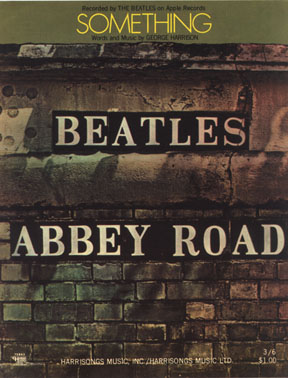 This orchestral session, the actual musicians not being documented, ended the recording of “Golden Slumbers.” It only took a total of three hours to record the orchestra for both “Golden Slumbers / Carry That Weight” and “The End,” all of which being recorded onto track eight of the eight-track tape, thereby recording over Paul's guide vocal from the rhythm track. George Martin's orchestral score was followed to the tee by professional studio musicians, this isolated orchestral session being heard on various 50th Anniversary "Abbey Road" editions. This afternoon session ended at 5:30 pm, all personnel not leaving until 7 pm when the orchestral overdubs for George Harrison's “Something” and “Here Comes The Sun” were recorded for the evening session. This orchestral session, the actual musicians not being documented, ended the recording of “Golden Slumbers.” It only took a total of three hours to record the orchestra for both “Golden Slumbers / Carry That Weight” and “The End,” all of which being recorded onto track eight of the eight-track tape, thereby recording over Paul's guide vocal from the rhythm track. George Martin's orchestral score was followed to the tee by professional studio musicians, this isolated orchestral session being heard on various 50th Anniversary "Abbey Road" editions. This afternoon session ended at 5:30 pm, all personnel not leaving until 7 pm when the orchestral overdubs for George Harrison's “Something” and “Here Comes The Sun” were recorded for the evening session.
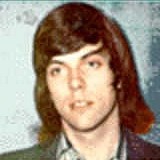 August 18th, 1969, was the date that the official stereo mix of “Golden Slumbers” took place. The session began at 2:30 pm in the control room of EMI Studio Two. Before the mix occurred, the orchestral overdub on track eight was treated with ADT ("Automatic Double Tracking") which was recorded onto an open track of the eight-track tape. During the mix, track eight, which contained the straight orchestral overdub, was positioned on one channel of the stereo landscape, while the orchestra with slightly delayed ADT was positioned on the other side, thus creating a lush orchestral backdrop to the released recording. Two attempts at a stereo mix were made by George Martin and engineers Geoff Emerick, Phil McDonald and Alan Parsons, the second remix being deemed acceptable for release. This session ended at 10:30 pm. August 18th, 1969, was the date that the official stereo mix of “Golden Slumbers” took place. The session began at 2:30 pm in the control room of EMI Studio Two. Before the mix occurred, the orchestral overdub on track eight was treated with ADT ("Automatic Double Tracking") which was recorded onto an open track of the eight-track tape. During the mix, track eight, which contained the straight orchestral overdub, was positioned on one channel of the stereo landscape, while the orchestra with slightly delayed ADT was positioned on the other side, thus creating a lush orchestral backdrop to the released recording. Two attempts at a stereo mix were made by George Martin and engineers Geoff Emerick, Phil McDonald and Alan Parsons, the second remix being deemed acceptable for release. This session ended at 10:30 pm.
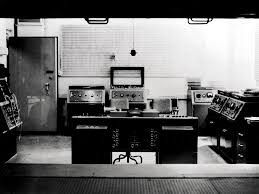 On the next day, August 19th, 1969, the same engineering team assembled in the control room of EMI Studio Two at 2 pm. Among the work done on this day was performing the cross-fade/edit between “Golden Slumbers / Carry That Weight” and “The End.” After more stereo mixing and overdubbing was accomplished on other “Abbey Road” songs, this session was complete at 4 pm. On the next day, August 19th, 1969, the same engineering team assembled in the control room of EMI Studio Two at 2 pm. Among the work done on this day was performing the cross-fade/edit between “Golden Slumbers / Carry That Weight” and “The End.” After more stereo mixing and overdubbing was accomplished on other “Abbey Road” songs, this session was complete at 4 pm.
 Sometime in 2019, George Martin's son Giles Martin, along with engineer Sam Okell, returned to the master tapes of "Golden Slumbers" to create a vibrant new stereo mix for inclusion on various 50th Anniversary releases of "Abbey Road." While they were at it, they also created stereo mixes of takes one through three of the rhythm track as recorded on July 2nd, 1969, the trial edit and mix of the entire "Abbey Road" medley of July 30th, 1969, and the orchestral overdub of August 15th of that year. Sometime in 2019, George Martin's son Giles Martin, along with engineer Sam Okell, returned to the master tapes of "Golden Slumbers" to create a vibrant new stereo mix for inclusion on various 50th Anniversary releases of "Abbey Road." While they were at it, they also created stereo mixes of takes one through three of the rhythm track as recorded on July 2nd, 1969, the trial edit and mix of the entire "Abbey Road" medley of July 30th, 1969, and the orchestral overdub of August 15th of that year.
On December 9th, 1989, Paul and his touring band recorded a live version of “Golden Slumbers,” along with “Carry That Weight” and “The End,” that was released on both his albums “Tripping The Live Fantastic” and “Tripping The Live Fantastic: Highlights!”
Song Structure and Style
The structure of "Golden Slumbers," being such a short section of the long "Abbey Road" medley, consists of 'verse/ refrain/ verse' (or aba). This, of course, leads into "Carry That Weight," which consists of various movements that lead into the final selection of the medley, "The End," which also consists of many changing segments.
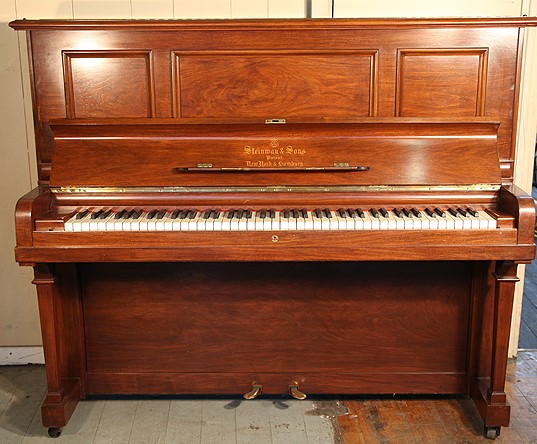 A small single-measure introduction with Paul on piano sets the stage for the first ten-measure verse. All of these measures are in 4/4 time except for measure seven which is in 6/4 time, this measure containing the lyric “sleep little darling, do not cry.” Paul continues the piano figure as played in the introduction as the verse begins, coming in on the downbeat with the lyrics “once there was a way.” The downbeat of the second measure introduces George on bass, playing a resounding scooping note while the strings come in at the same time. Paul's piano and the orchestra continue on into measures three and four, George adding another bass note on the downbeat of the fourth measure. Paul on piano and lead vocals, the orchestra and George's periodic gentle bass notes continue on to finish out the verse, Ringo coming in with a strident drum fill in the tenth measure to introduce the refrain that follows. A small single-measure introduction with Paul on piano sets the stage for the first ten-measure verse. All of these measures are in 4/4 time except for measure seven which is in 6/4 time, this measure containing the lyric “sleep little darling, do not cry.” Paul continues the piano figure as played in the introduction as the verse begins, coming in on the downbeat with the lyrics “once there was a way.” The downbeat of the second measure introduces George on bass, playing a resounding scooping note while the strings come in at the same time. Paul's piano and the orchestra continue on into measures three and four, George adding another bass note on the downbeat of the fourth measure. Paul on piano and lead vocals, the orchestra and George's periodic gentle bass notes continue on to finish out the verse, Ringo coming in with a strident drum fill in the tenth measure to introduce the refrain that follows.
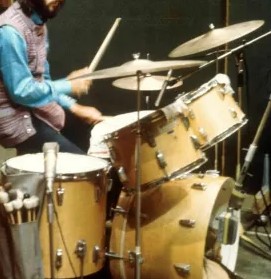 This refrain is nine-measures long and continues with the same instrumentation as in the first verse. With Ringo flailing away on drum fills and crashing cymbals for the first five measures, Paul delivers his vocals with masked intensity to contrast with the softness of the “lullaby” lyrics that follow in measures eight and nine. These final measures, six through nine, are actually a repeat of measures seven through ten of the first verse, measure six this time being the one in 6/4 time. Ringo drops off completely on the downbeat of the seventh measure, allowing the elements of the final measures to be a virtual repeat of the verse that preceded it. This refrain is nine-measures long and continues with the same instrumentation as in the first verse. With Ringo flailing away on drum fills and crashing cymbals for the first five measures, Paul delivers his vocals with masked intensity to contrast with the softness of the “lullaby” lyrics that follow in measures eight and nine. These final measures, six through nine, are actually a repeat of measures seven through ten of the first verse, measure six this time being the one in 6/4 time. Ringo drops off completely on the downbeat of the seventh measure, allowing the elements of the final measures to be a virtual repeat of the verse that preceded it.
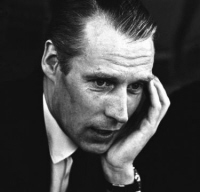 Next comes a repeat of the first verse in its entirety, the only differences being Ringo's quiet accents on cymbals on the downbeats of measures one, three and five, before pounding out some drum beats in the 6/4 time signature seventh measure. George Martin's string arrangement adds a fluent melody line in measures three and four while George Harrison is continued to be trusted by Paul to contribute simple but effective bass notes to this final verse. Ringo once again adds a vibrant drum fill in the tenth measure to introduce the brash “Carry That Weight” that follows, thus ending “Golden Slumbers” in the process. Next comes a repeat of the first verse in its entirety, the only differences being Ringo's quiet accents on cymbals on the downbeats of measures one, three and five, before pounding out some drum beats in the 6/4 time signature seventh measure. George Martin's string arrangement adds a fluent melody line in measures three and four while George Harrison is continued to be trusted by Paul to contribute simple but effective bass notes to this final verse. Ringo once again adds a vibrant drum fill in the tenth measure to introduce the brash “Carry That Weight” that follows, thus ending “Golden Slumbers” in the process.
American Releases
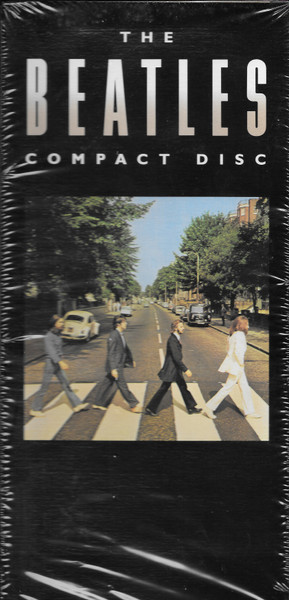 On October 1st, 1969, the final recorded Beatles album was released in America, simply titled "Abbey Road." "Golden Slumbers" is the eighth track on side two of the album and the sixth named track of the long medley that makes up the majority of this second side of the album. The "Abbey Road" album took only three weeks to jump into the top spot on the Billboard album chart, raking in a total of eleven weeks in the #1 position. The album first appeared on compact disc on October 10th, 1987, and then as a remastered release on September 9th, 2009. A 50th Anniversary release on 180-gram vinyl and CD came out on September 27th, 2019, not to mention an opaque green vinyl edition coming out on October 10th, 2025 as an exclusive release available only at Target Department Stores. On October 1st, 1969, the final recorded Beatles album was released in America, simply titled "Abbey Road." "Golden Slumbers" is the eighth track on side two of the album and the sixth named track of the long medley that makes up the majority of this second side of the album. The "Abbey Road" album took only three weeks to jump into the top spot on the Billboard album chart, raking in a total of eleven weeks in the #1 position. The album first appeared on compact disc on October 10th, 1987, and then as a remastered release on September 9th, 2009. A 50th Anniversary release on 180-gram vinyl and CD came out on September 27th, 2019, not to mention an opaque green vinyl edition coming out on October 10th, 2025 as an exclusive release available only at Target Department Stores.
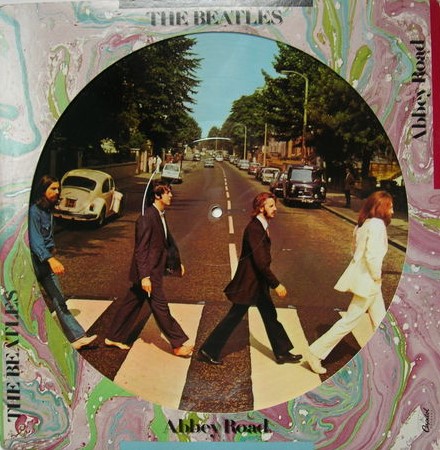 Sometime in 1978, Capitol re-released the “Abbey Road” album as a picture disc. Side one had the iconic front cover while side two contained a close-up of the wall photo of the back cover minus the song title listings. This release quickly went out of print but was re-released on September 27th, 2019 on 180-gram vinyl to commemorate the album's 50th Anniversary. Sometime in 1978, Capitol re-released the “Abbey Road” album as a picture disc. Side one had the iconic front cover while side two contained a close-up of the wall photo of the back cover minus the song title listings. This release quickly went out of print but was re-released on September 27th, 2019 on 180-gram vinyl to commemorate the album's 50th Anniversary.
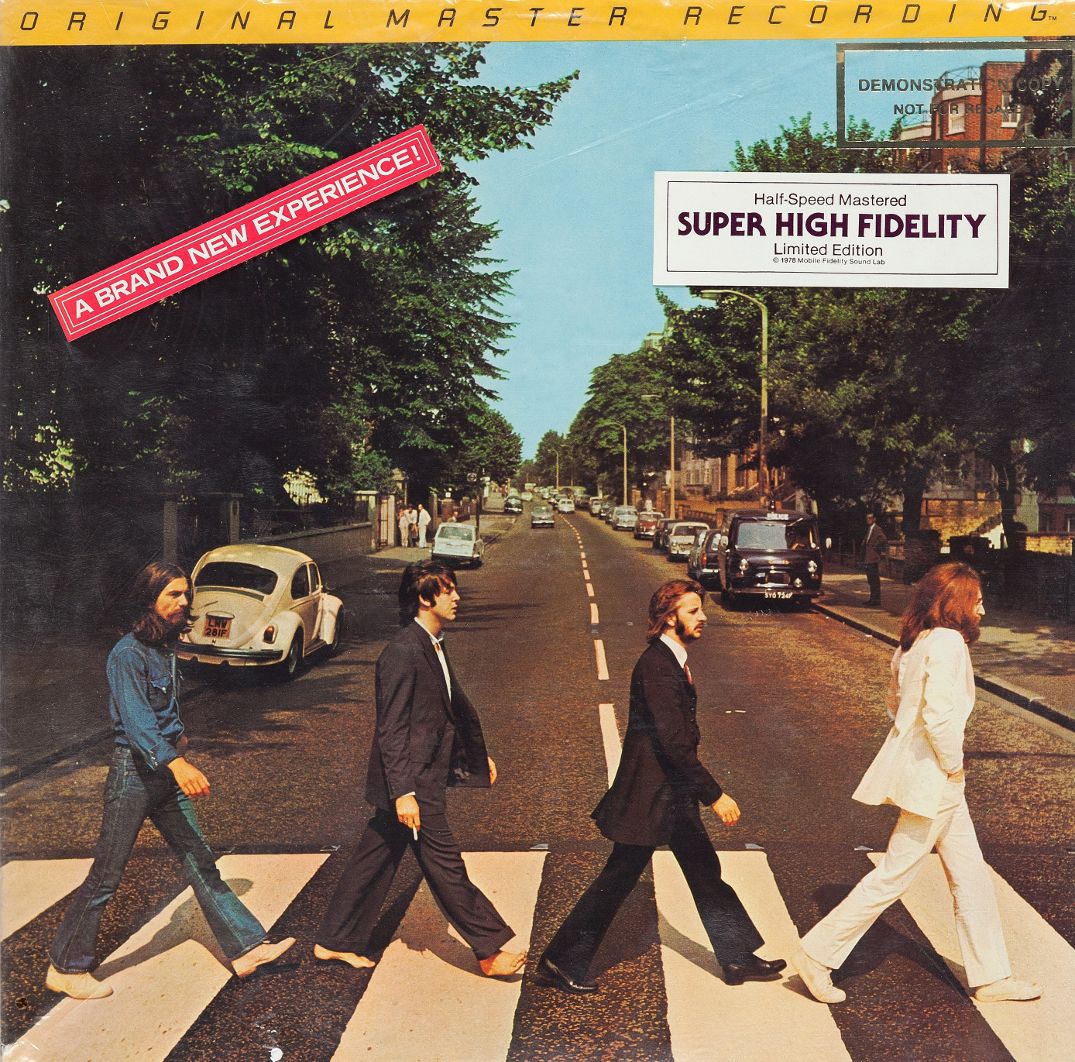 An interesting US vinyl edition of “Abbey Road” was released on December 28th, 1979, this being manufactured by Mobile Fidelity Sound Lab in Chatsworth, California as the first Beatles installment in their "Original Master Recording" series. Their practice was to prepare a new master utilizing half-speed mastering technology from the original master tapes, in this case using the leased sub-master from Capitol Records. Stickers on the shrinkwrap proclaimed this album as being “A Brand New Experience,” which proved to be the case. This version of the album sounded superior to all previous British and American pressings at that time. Unfortunately, this excellent edition of “Abbey Road” was only available for a short time and is quite collectible today. An interesting US vinyl edition of “Abbey Road” was released on December 28th, 1979, this being manufactured by Mobile Fidelity Sound Lab in Chatsworth, California as the first Beatles installment in their "Original Master Recording" series. Their practice was to prepare a new master utilizing half-speed mastering technology from the original master tapes, in this case using the leased sub-master from Capitol Records. Stickers on the shrinkwrap proclaimed this album as being “A Brand New Experience,” which proved to be the case. This version of the album sounded superior to all previous British and American pressings at that time. Unfortunately, this excellent edition of “Abbey Road” was only available for a short time and is quite collectible today.
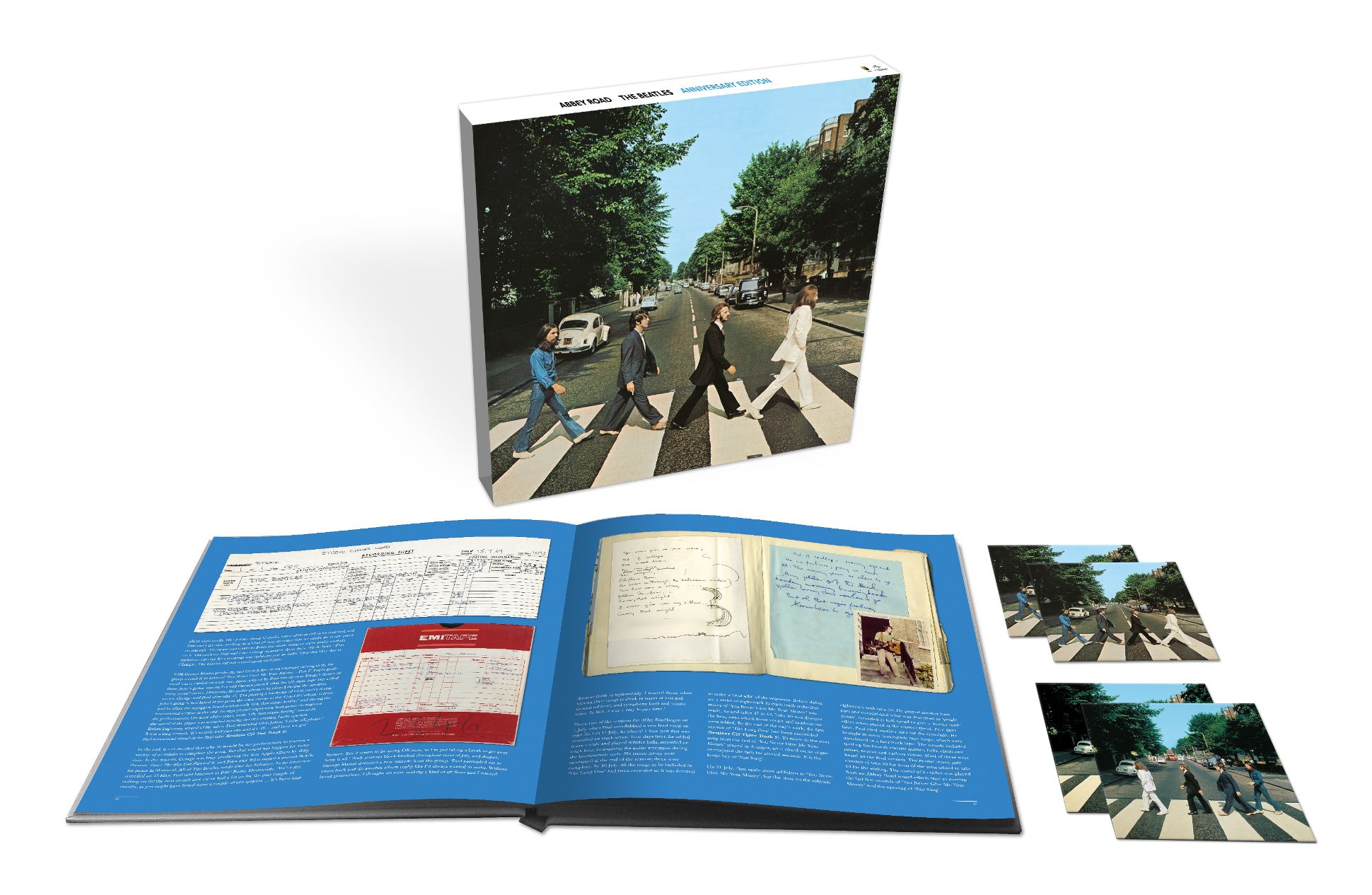 On September 27th, 2019, various other editions of "Abbey Road" were released in connection with its 50th Anniversary. The "Deluxe" 2CD edition contains the new Giles Martin mix of the entire album as well as the never-before-heard sequence of takes one through three of "Golden Slumbers" as recorded on July 2nd, 1969. The "Triple Album" vinyl set and the "Super Deluxe" 3CD + Blu-ray edition contain these tracks as well, along with the isolated orchestral score of the "Golden Slumbers / Carry That Weight" medley and the July 30th, 1969 trial edit and mix of the entire "Abbey Road" medley, as described above, which contains "Golden Slumbers" as it was recorded thus far. On September 27th, 2019, various other editions of "Abbey Road" were released in connection with its 50th Anniversary. The "Deluxe" 2CD edition contains the new Giles Martin mix of the entire album as well as the never-before-heard sequence of takes one through three of "Golden Slumbers" as recorded on July 2nd, 1969. The "Triple Album" vinyl set and the "Super Deluxe" 3CD + Blu-ray edition contain these tracks as well, along with the isolated orchestral score of the "Golden Slumbers / Carry That Weight" medley and the July 30th, 1969 trial edit and mix of the entire "Abbey Road" medley, as described above, which contains "Golden Slumbers" as it was recorded thus far.
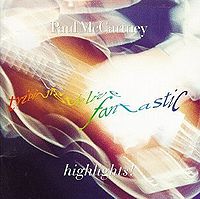 November 5th, 1990, was the release date for Paul's successful double-CD “Tripping The Live Fantastic,” which featured a live rendition of the final three segments of the “Abbey Road” medley, namely, “Golden Slumbers,” “Carry That Weight” and “The End.” For those who didn't want to buy the full double-CD package, a single live disc entitled “Tripping The Live Fantastic: Highlights!” was released a week later, on November 12th, 1990. This also contained the same live version of “Golden Slumbers.” Although the original album peaked much higher on the Billboard album charts (#26), the “Highlights!” single disc eventually went platinum despite its weak chart showing at #141. November 5th, 1990, was the release date for Paul's successful double-CD “Tripping The Live Fantastic,” which featured a live rendition of the final three segments of the “Abbey Road” medley, namely, “Golden Slumbers,” “Carry That Weight” and “The End.” For those who didn't want to buy the full double-CD package, a single live disc entitled “Tripping The Live Fantastic: Highlights!” was released a week later, on November 12th, 1990. This also contained the same live version of “Golden Slumbers.” Although the original album peaked much higher on the Billboard album charts (#26), the “Highlights!” single disc eventually went platinum despite its weak chart showing at #141.
Live Performances
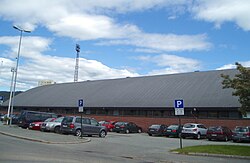 The Beatles never performed the song live but, as mentioned above, Paul thought to include "Golden Slumbers," “Carry That Weight” and “The End” on his “World Tour” well after the breakup of The Beatles. The tour stretched from September 26th, 1989 (at the Drammenshallen Indoor Arena in Drammen, Sweden) to July 29th, 1990 (Chicago, Illinois). This three-song medley made for a suitable ending song on this tour, his first since his Wings UK Tour of 1979. The Beatles never performed the song live but, as mentioned above, Paul thought to include "Golden Slumbers," “Carry That Weight” and “The End” on his “World Tour” well after the breakup of The Beatles. The tour stretched from September 26th, 1989 (at the Drammenshallen Indoor Arena in Drammen, Sweden) to July 29th, 1990 (Chicago, Illinois). This three-song medley made for a suitable ending song on this tour, his first since his Wings UK Tour of 1979.
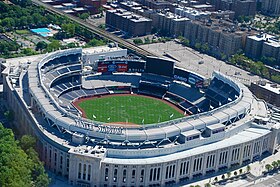 Paul then brought this medley back into use as the closing selection during his “On The Run” tour. This tour began on July 15th, 2011 (at Yankee Stadium in New York City) and ended on November 29th, 2012 (Edmonton, Canada). Paul also included it as the closing number during his extensive “Out There” tour, which stretched from May 4th, 2013 (Belo Horizonte, Brazil) to October 22nd, 2015 (Buffalo, New York). The same was true for his “One On One” tour, which ran from April 13th, 2016 (Fresno, California) to December 16th, 2017 (Auckland, New Zealand), as well as his "Freshen Up" tour, which began on September 17th, 2018 (Quebec City, Canada) and ended on July 13th, 2019 (Los Angeles, California). The medley also concluded every show of his "Got Back" tour, which ran from April 28th, 2022 (Spokane, Washington) to December 19th, 2024 (London, England). Paul then brought this medley back into use as the closing selection during his “On The Run” tour. This tour began on July 15th, 2011 (at Yankee Stadium in New York City) and ended on November 29th, 2012 (Edmonton, Canada). Paul also included it as the closing number during his extensive “Out There” tour, which stretched from May 4th, 2013 (Belo Horizonte, Brazil) to October 22nd, 2015 (Buffalo, New York). The same was true for his “One On One” tour, which ran from April 13th, 2016 (Fresno, California) to December 16th, 2017 (Auckland, New Zealand), as well as his "Freshen Up" tour, which began on September 17th, 2018 (Quebec City, Canada) and ended on July 13th, 2019 (Los Angeles, California). The medley also concluded every show of his "Got Back" tour, which ran from April 28th, 2022 (Spokane, Washington) to December 19th, 2024 (London, England).
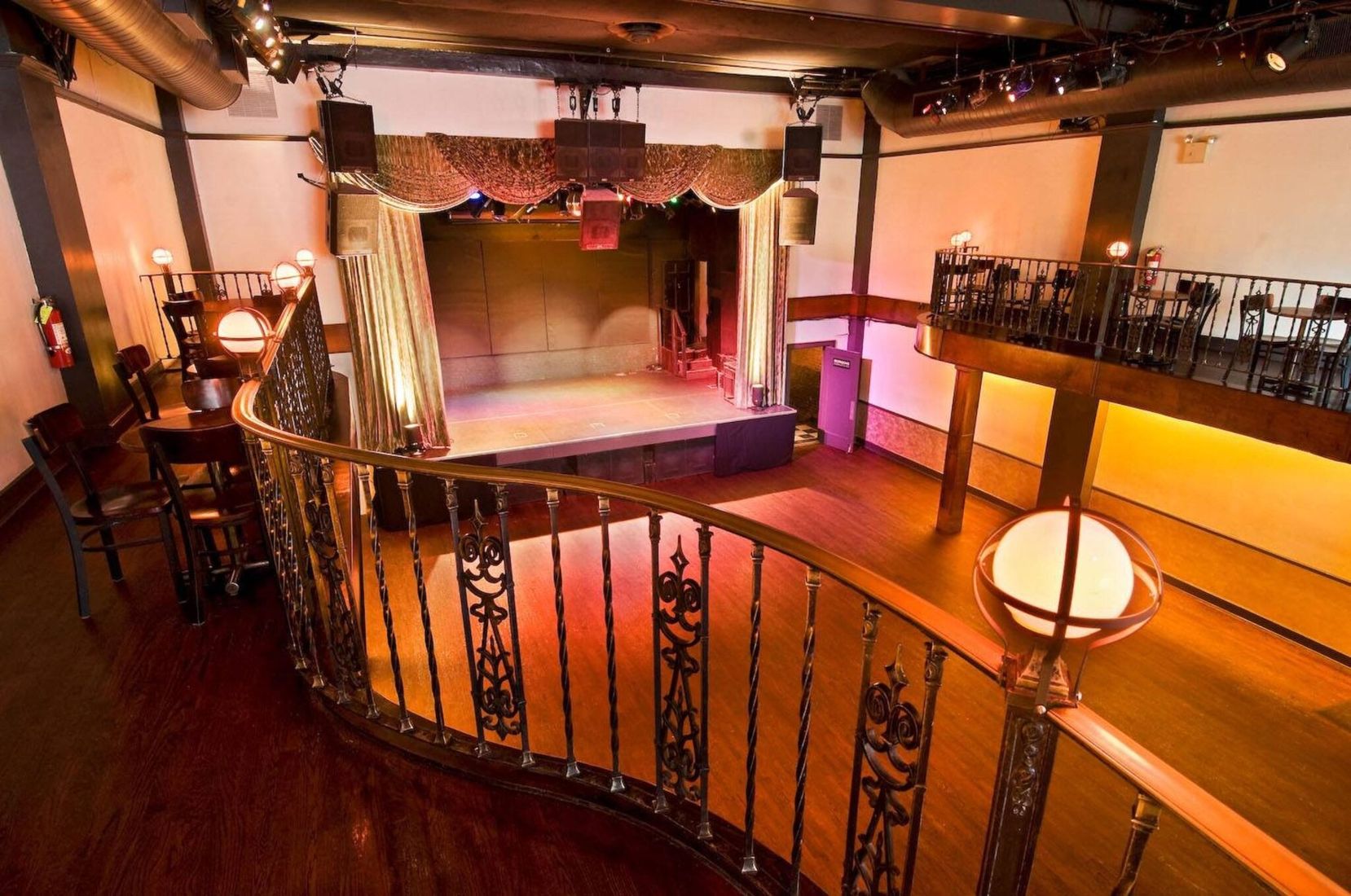 Interestingly, McCartney and his band played a surprise three night residency at the very quaint Bowery Ballroom in New York City on February 11th, 12th and 14th, 2025, this final night being Valentine's Day. The group performed the "Golden Slumbers" medley to close each of these shows at this 575-capacity Manhattan venue. Two days later, McCartney and his group gave a live television performance of the medley on February 16th, 2025 as the finale to the Saturday Night Live 50th Anniversary program. Interestingly, McCartney and his band played a surprise three night residency at the very quaint Bowery Ballroom in New York City on February 11th, 12th and 14th, 2025, this final night being Valentine's Day. The group performed the "Golden Slumbers" medley to close each of these shows at this 575-capacity Manhattan venue. Two days later, McCartney and his group gave a live television performance of the medley on February 16th, 2025 as the finale to the Saturday Night Live 50th Anniversary program.
Conclusion
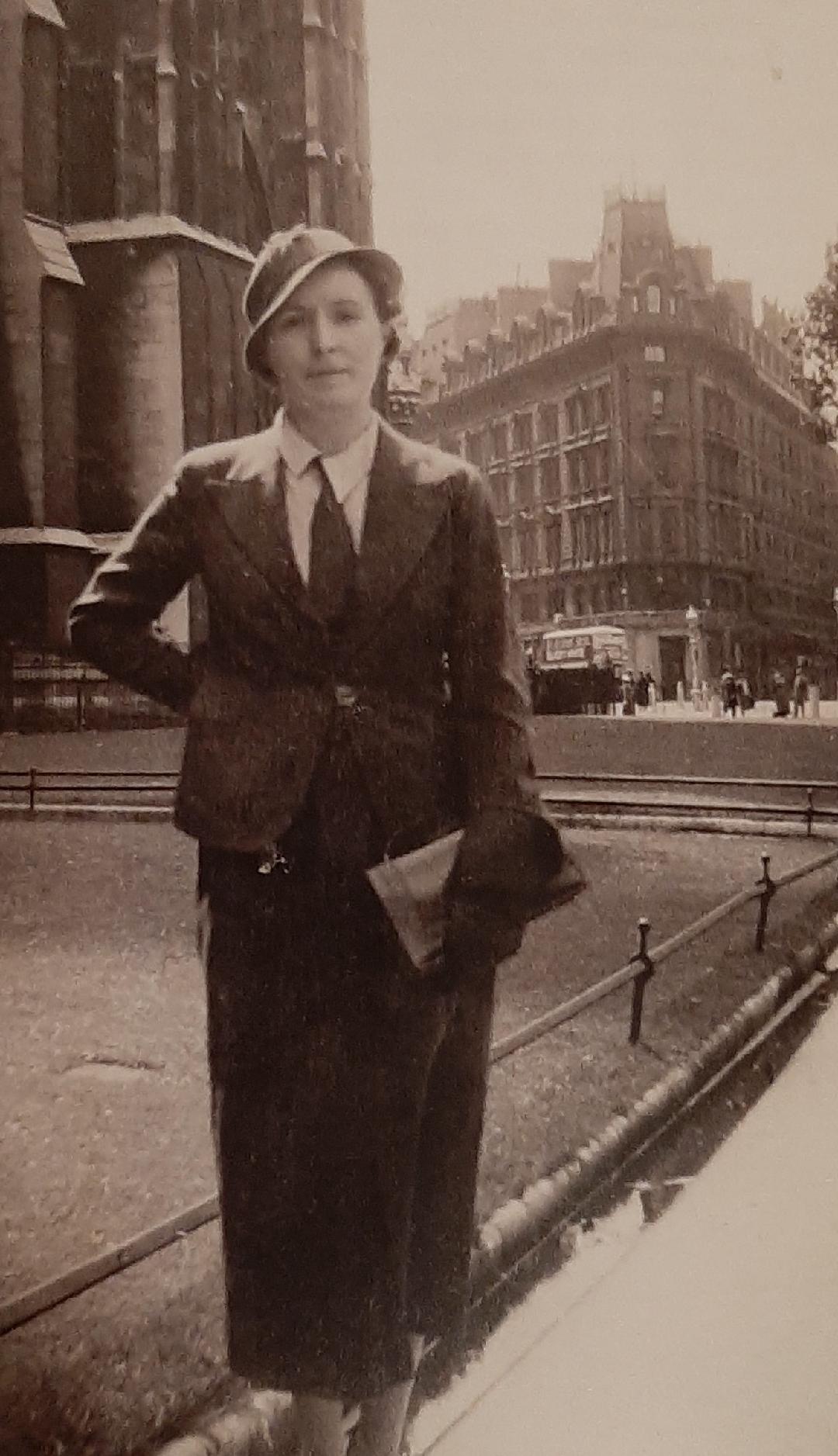 The balance of lyrics and melody-line found in "Golden Slumbers," amid the piano backdrop and orchestral swells, portray the sentiments of nostalgia and longing. While his lyrically similar "get back to where you once belonged" implied a musical return-to-form for his band, Paul's aching "once there was a way to get back homeward" created the feeling that, if only we could go back in time to our childhood, all would be right with the world. In the bosom of our mother, we could happily fall to sleep while she sang us a lullaby. The balance of lyrics and melody-line found in "Golden Slumbers," amid the piano backdrop and orchestral swells, portray the sentiments of nostalgia and longing. While his lyrically similar "get back to where you once belonged" implied a musical return-to-form for his band, Paul's aching "once there was a way to get back homeward" created the feeling that, if only we could go back in time to our childhood, all would be right with the world. In the bosom of our mother, we could happily fall to sleep while she sang us a lullaby.
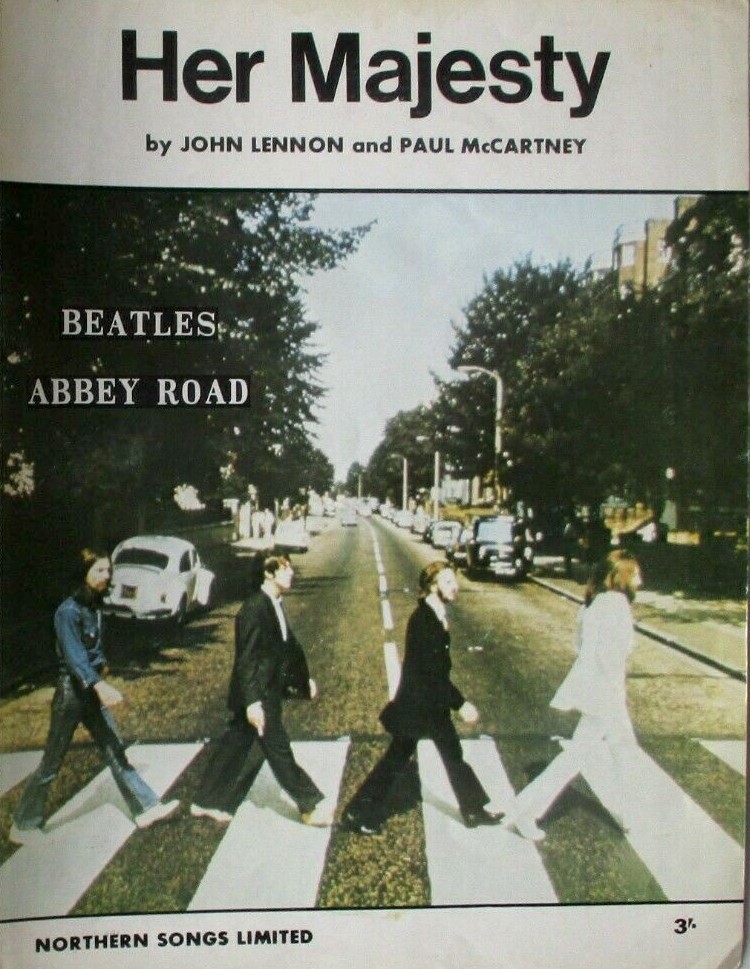 With the later realization that this was the opening portion of the last musical segment of the last recorded Beatles album (not counting the humorous snippet “Her Majesty”), an even more poignant message emerges that particularly resonates with their fans. The message becomes: 'It was a fun ride that we're very glad you joined us in. But there is no going back. It's now time to part, but don't cry. The memories are always there to cherish.' With the later realization that this was the opening portion of the last musical segment of the last recorded Beatles album (not counting the humorous snippet “Her Majesty”), an even more poignant message emerges that particularly resonates with their fans. The message becomes: 'It was a fun ride that we're very glad you joined us in. But there is no going back. It's now time to part, but don't cry. The memories are always there to cherish.'
And in regard to the arrangement and performance, producer George Martin, in the liner notes of his album "In My Life," states: "The end of the 'Abbey Road' album is for me one of the best examples of how rock music can work well within a classical format. I have alway loved the piece."
Song Summary
“Golden Slumbers”
Written by: John Lennon / Paul McCartney
- Song Written: December 1968 to January 9, 1969
- Song Recorded: July 2, 3, 4, 30, 31, August 15, 1969
- First US Release Date: October 1, 1969
- First US Album Release: Apple #SO-383 “Abbey Road”
- British Album Release: Apple #PCS 7088 “Abbey Road”
- US Single Release: n/a
- Highest Chart Position: n/a
- Length: 1:31
- Key: A minor / C major
- Producer: George Martin
- Engineers: Phil McDonald, Geoff Emerick, Chris Blair, John Kurlander, Alan Parsons
Instrumentation (most likely):
- Paul McCartney - Lead Vocals, Piano (1905 Steinway Vertegrand)
- George Harrison - Bass (1961 Fender Bass VI)
- Ringo Starr - Drums (1968 Ludwig Hollywood Maple)
- unknown - violin
- unknown - violin
- unknown - violin
- unknown - violin
- unknown - violin
- unknown - violin
- unknown - violin
- unknown - violin
- unknown - violin
- unknown - violin
- unknown - violin
- unknown - violin
- unknown - viola
- unknown - viola
- unknown - viola
- unknown - viola
- unknown - cello
- unknown - cello
- unknown - cello
- unknown - cello
- unknown - string bass
- unknown - horn
- unknown - horn
- unknown - horn
- unknown - horn
- unknown - trumpet
- unknown - trumpet
- unknown - trumpet
- unknown - trombone
- unknown - bass trombone
Written and compiled by Dave Rybaczewski
|
IF YOU WOULD LIKE TO MAKE A DONATION TO KEEP THIS WEBSITE UP AND RUNNING, PLEASE CLICK BELOW!
Sign Up Below for our MONTHLY BEATLES TRIVIA QUIZ!
|